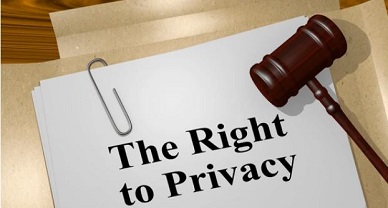Character Merchandising
INTRODUCTION
Character merchandising is a clever marketing method through which goods and services similar to well-known imaginary or even real characters are made for appealing customers. In other words, it is a profitable manipulation of a renowned personality using its well-recognized national/international appeal.
Over time, the possibilities of character merchandising have amplified in such diverse forms that what perceived as an ancillary source of commercial abuse by the entertainment industry has become the sign in terms of revenue.
From the initial days of character merchandising when Walt Disney Studios began licensing their famous characters in the 1930s to the present day film product placements such as Toy Story where movies are produced around the characters to serve as a medium of promotion of toy characters, character merchandising has evolved as in such versatile forms that their classification in an organized manner is essential to comprehend the true scope of character merchandising and is an essential precondition to its study.
Extraordinary development in the advertising industry over time has emphasized how the fame of famous characters may be real or fictional can build cognizance and immensely blow out the admiration of such goods and services.
The sources of a character in character merchandising can be seen to be taken from various products of a literary work, artistic work, or cinematographic work.
THERE ARE THREE TYPES OF CHARACTER MERCHANDISING
- Personality Merchandising–
The name ‘Personality Merchandising’ or ‘Reputation Merchandising’ denotes the usage of celebrities or well-known people for marketing. It comprises the use of crucial traits of the celebrities, like their picture, voice, name, or other features to endorse goods and services in the market. ‘Sach’, a brand named after Sachin Tendulkar, ‘Sauravs’ (which currently is closed), a restaurant in Kolkata named after Saurav Ganguly, perfume by the name of David Beckham are popular examples.
- Fictional or Cartoon Character Merchandising–
Cartoon characters are the most popular merchantable characters ever created thus fictional character merchandising is the use of fictional or cartoon characters in merchandising for commercial gains for e.g. use of Chhota Bheem images on products to sell them faster by making it appealing to the kids. The use of Minnie Mouse on Cadbury products, Spiderman apparel, etc is other examples in the Indian context. Cinematograph films have also aided character merchandising with well-known and worldwide adored movie characters like Kung-fu Panda, Noddy, Nemo, etc.
- Image Merchandising–
Image merchandising is an instance where characters of fictional films or television shows played by real actors are used in the marketing and advertising of goods and services. It is deliberated to be a cross of the Fictional Character Merchandising and Personality Merchandising. In cases like this, the identification of the character is done by combining the most well-known or the signature traits of the real-life person as well as its fictional counterpart. Examples of image merchandising include Harry Potter being played by Daniel Radcliffe, James Bond being played by various actors, Captain Jack Sparrow played by Johnny Depp, etc. Such situations create a dual reputation for individuals whereby the same person develops a reputation of his own as well as carries the reputation of the character portrayed by him.
CASES ON CHARACTER MERCHANDISING
- In the case of Chorion Rights Limited V. Ishan Apparel and Ors. (2010)ILR 5Delhi481, the plaintiff, claimed to be the proprietor of the universal trademark and merchandising privileges of the fictitious character named NODDY which was a cartoon character and had a show which was broadcasted many times in a day on the channel Pogo under the time slot of Tiny T V and sought to stop the defendant from marketing apparel in the same trade name NODDY. Although the court accepted the significance of protection from the ill effects of character merchandising, it held that the registration for the mark was established by the defendant successfully sometime in 1995 whereas the plaintiff’s claim on the mark was from 1997. Hence, although the plaintiff was the rightful owner of all the merchandising rights in NODDY in most jurisdictions, the defendant was the first party to get the registration in India. This is an example of a Fictional or cartoon character merchandising.
- In a recent case of Disney Enterprises Inc. & Anr. Vs. Santosh Kumar &Anr. CS(OS) 3032/2011, The Delhi High Court held the respondent was responsible for marketing products comprising depictions of characters such as Hannah Montana, Winnie the Pooh, etc whose merchandising privileges were possessed by the applicant. The court held that there was indeed an extreme amount of link between the applicant’s claims and the aforesaid characters which the sole reason as to why any mention of these characters reminds the consumers exclusively of the applicants. This is another example of Fictional or cartoon character merchandising.
- The court widely scrutinized the perception of personality merchandising in the case of D.M. Entertainment Pvt. Ltd. Vs. Baby Gift House and Ors CS(OS) 893/2002. In this case, the plaintiff was a company that was a representative of the famous singer Daler Mehndi. They sought to avert the respondent from marketing dolls that could resonate portions of Mr. Mehndi’s songs. The court acknowledged that Mr. Mehndi’s identity was inappropriately utilized by the respondents in the above-mentioned dolls and that this deceived customers into considering that the dolls were in fact endorsed by Mr. Mehndi. The court further specified that such profit-making manipulation caused substantial losses to the plaintiff and held that the defendant was liable for passing off. This is an example of personality merchandising.
- The case of DM Entertainment Pvt Ltd v. Baby Gift House is a case of endorsement by Amitabh Bachchan and his wife Jaya Bachchan of jewelry, the plaintiff had asked Celebrity couple Amitabh Bachchan and Jaya Bachchan to endorse and market their collection of premium diamond jewelry sold under the brand name ‘Tanishq’. The duo consigned their personality rights to the petitioner to use in commercials in all media, which includes print and video. The petitioner invested massive amounts of money in the advertising campaign. The defendant, a jeweler dealing in goods identical to those of the plaintiff was found to have put up a hoarding identical to that of the plaintiff with the same picture of the couple on it as the plaintiff’s hoarding. Since the defendant neither sought permission from the couple to use their photograph nor been authorized to do so by the plaintiff, the court held it liable for misappropriation of the couple’s personality rights. Here the court observed that “when the identity of a famous personality is used in advertising without their permission, the complaint is not that no one should not commercialize their identity but that the right to control when, where and how their identity is used should vest with the famous personality. The right to control the commercial use of human identity is the right to publicity”
CURRENT SCENARIO IN INDIA
- In India, The Copyright Act 1957 seems to be the lone warrior supporting the copyright owners. The Indian courts have been seen to take the age-old provisions of the constitution under common law remedies like passing off, which seems to be too vague and not updated in the fast-paced business dynamics of the country. Under the Copyright Act,1957, section-2(d)(v) clearly recognizes the producers as the author of cinematographic films whereas section-14(d) gives the right to the exclusive rights to the owner to make a copy of any part of the film including images. And Section 38(4) enunciates that the performer loses his performers right once he has consented to the inclusion of his performance in a cinematographic film. So here it can be seen that the producers get a broader scope of rights than that of the performers.
- Under the Constitution of India, Article-21 relates to the Right to life and personal liberty which encompasses privacy as one of its facets.
- Under The Trademarks Act, 1999, a registered trademark owner can restrict another person from using a deceptively identical mark without permission on their goods and services for sale offering of advertisement even, otherwise, it may attract punishment.
Trademark and unfair competition protection may extend well beyond the copyright term as long as the character keeps his secondary meaning and there is a likelihood of public confusion, thus providing longer life and better protection for the character.
So, it can be well perceived via the above discussion that even though there are a number of mechanisms to curb character merchandising, without specific legislation on this subject and without its harsh enforceability, the ill effects of character merchandising cannot be curbed. All these indirect legislations are unable to help the suffering parties to the best of their demand.
Author: Debleena Ganguly, Intern at IP and Legal Filings, and can be reached at support@ipandlegalfilings.com.


